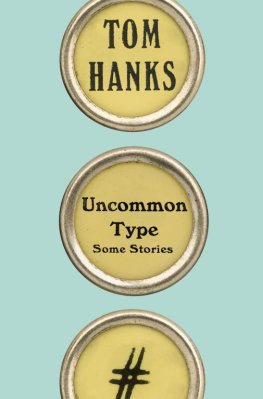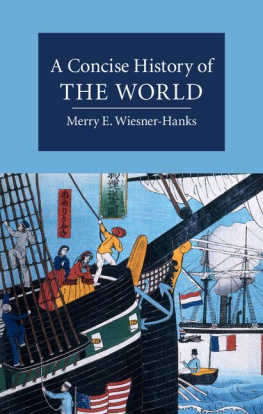Language and Communicative Practices
CRITICAL ESSAYS IN ANTHROPOLOGY
Series Editors
John Comaroff, University of Chicago
Pierre Bourdieu, College de France
Maurice Bloch, London School of Economics
Language and Communicative Practices, William F. Hanks
FORTHCOMING
Reconceptualizing the Peasantry, Michael Kearney
Discourse, Knowledge, and Culture, John D. Kelly
Imaginary Subjects, Illusory Sovereignties: States, Nations, Cultures, Derek Sayer
Mind in Society, Society in Mind: A Critical Anthropology of Cognition, Dorothy C. Holland and Claudia Strauss
Critical Essays in Anthropology
First published 1996 by Westview Press
Published 2018 by Routledge
711 Third Avenue, New York, NY 10017, USA
2 Park Square, Milton Park, Abingdon, Oxon OX14 4RN
Routledge is an imprint of the Taylor & Francis Group, an informa business
All rights reserved. No part of this book may be reprinted or reproduced or utilised in any form or by any electronic, mechanical, or other means, now known or hereafter invented, including photocopying and recording, or in any information storage or retrieval system, without permission in writing from the publishers.
Notice:
Product or corporate names may be trademarks or registered trademarks, and are used only for identification and explanation without intent to infringe.
Hanks, William F.
Language and communicative practices / William F. Hanks
p. cm.
Includes bibliographical references (p. ) and index.
ISBN 0-8133-1216-7 ISBN 0-8133-1217-5 (pbk.)
1. Language and languages. 2. Linguistics. 3. Language and culture. 4. Social interaction. I. Title.
P106.H295 1996
410dc20
95-19534
CIP
ISBN 13:978-0-8133-1217-0 (pbk)
HOW DO WE MAKE MEANING with language? How is it that the things we say come to convey so much more than the simple words we use in saying them? A language, like English or Spanish, can be summarized in a dictionary or a grammar and discussed in the abstract as the speech native to a certain place, say, Chicago or Mexico City. But how do such abstractions stack up against the infinite utterances that can be, or have already been, spoken in the languages? It is a matter of common sense that words are spoken in context, that if we take them out of context they can be made to mean many different things. But what is a context? And how long does it lasta minute, an hour? Next to real action, speech seems as weightless as it is fleeting, and yet we have all experienced words that made a difference. Promises, threats, judgments, and plain conversations that have consequencessome intended, some not. Talk seems wrapped up in thinking, and thinking in the mind, but we talk through our bodies, and language is as much a practice of the body as it is of the mind. What happens when we look at speech as bodily gesture? And what is the proper framework in which to understand itthe species, the individual mind-body-speaker, the social community?
These and other questions arise from a series of contradictions in language: It is both an abstract system and an intimate part of our daily experience, an individual capacity for expression and a social fact, a form and an activity. These contradictions are the starting point of this book. We will approach them from several perspectives. The first is through considering a few simple examples of speech, asking how they are understood in context, how what is said ties into what is taken for granted, how the values that speakers bring to talk shape their understandings. Here the goal is to analyze the tension between language and nonlanguage. The second approach is more synthetic and focuses on major theories of language from several disciplines. As we attempt to piece together significant questions and plausible answers, we will engage with a range of works in linguistics, philosophy, and anthropology. The aim is to develop an approach to communicative practice that combines the formal properties of linguistic systems with the dynamics of speech as social activity. Clearly, the analysis of examples and the synthesis of theories are interdependent parts of a single study, and a third major goal of the book is to show how they combine in practice.
The book is divided into three parts, each marking a moment in the overall life of language. The first, entitled Language the System, explores classic grammatical and semiotic theories, focusing on works by Saussure, Peirce, Morris, Bloom-field, and Chomsky. We want to locate the distinctive properties of linguistic systems in comparison to other kinds of semiotic systems, while clarifying the strengths and weaknesses of linguistic approaches to verbal meaning. The second part, Language the Nexus of Context, examines the idea of context, starting from linguistic pragmatics and moving on to phenomenology, Voloshinovs Marxist theory of utterance meaning, ethnographic studies of relativity and verbal style, and sociolinguistic theories of interaction. As we work through these different, sometimes contradictory, perspectives, we will successively recast the relation between verbal meaning and social context. The third and final part of the book, Communicative Practices, proposes a synthesis in three steps: the basic elements of communicative practice, corporeality in language, and meaning in history.
As a critical essay, this book is neutral neither in the choice of topics it addresses nor in the way it does so. There is a historical sequence in some of the works I discuss, notably in the first five chapters, and I treat many topics familiar to students of language. But my aim is to provoke reflection and to develop a framework for analyzing language as communicative practice, not to examine a history or survey a field. lay the foundations of standard approaches to language. Subsequent chapters depart substantially from these, drawing on my own research and bringing together a wide range of literature beyond the scope of current frameworks. Although much of contemporary theory draws a sharp distinction between discourse and practice, this book argues that discourse is practice, and practice depends crucially upon discourse. In other words, the two are overlapping, mutually constituting parts of social life. The problems addressed here are relevant to the interpretation of all cultural artifacts and particularly to the work of anthropologists, archaeologists, historians, and students of literature and cultural studies. Accordingly, the book is intended to open up fruitful lines of research to readers not already trained in linguistics or committed to the study of language. To that end, I have tried to observe a simple maxim: The more technical the topic, the more transparent the language and the examples I use to explain it. For the sake of clarity, I wrote the first draft in the form of lectures presented in introductory courses at the University of Chicago and elsewhere. The pacing and style of the prose reflect this, and I believe that the full import of the text is likely to be clearest on an oral reading. Each chapter ends with suggestions for further readings, and the table of contents and index are designed to make the book accessible as a tool in teaching and research. It is my conviction that language is basic to human sociality; that it can be properly understood only through a principled, interdisciplinary approach; and that theory and empirical description are inseparable.






